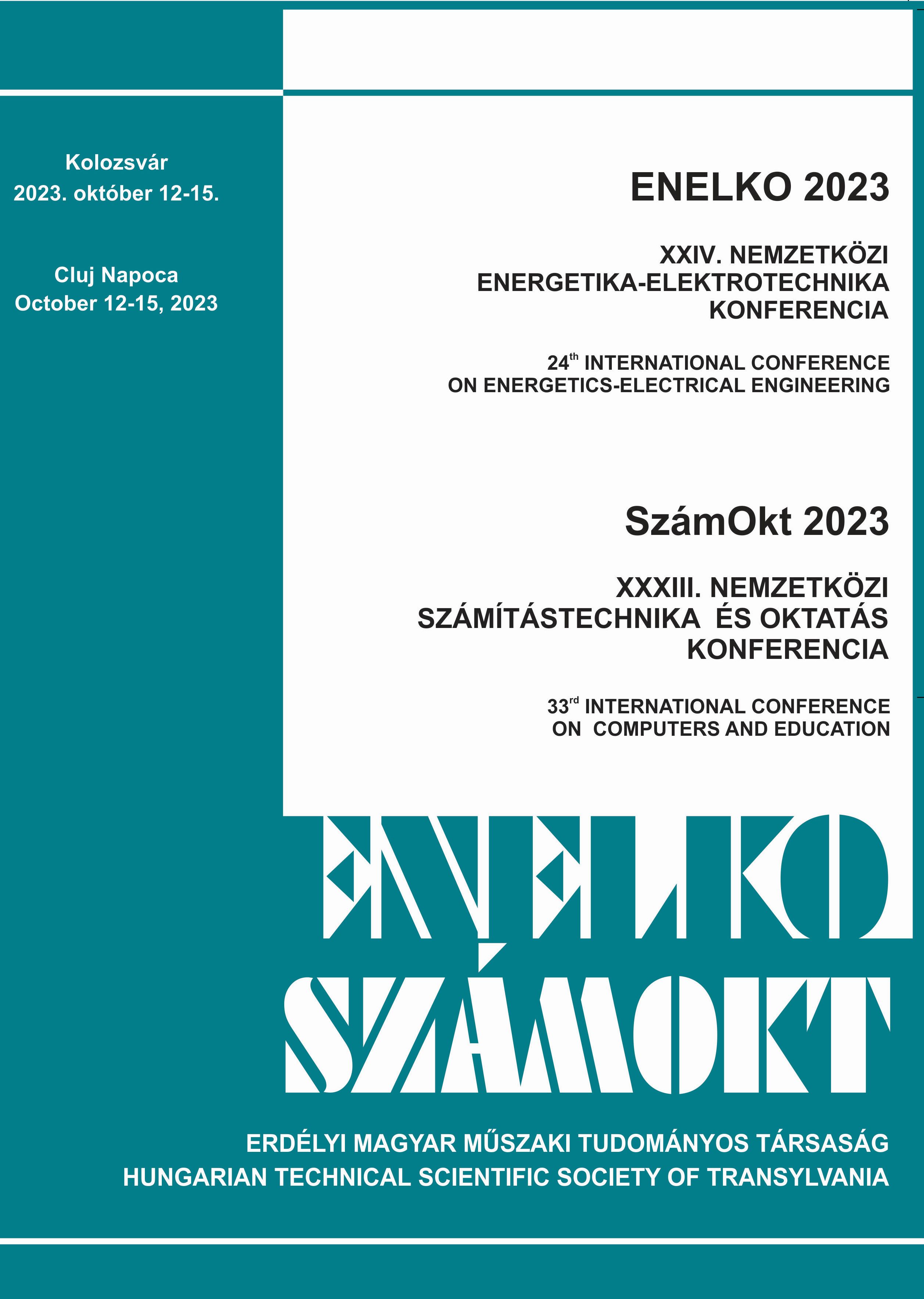AdaBoost algoritmus alkalmazhatóságának vizsgálata
A feasibility study of the AdaBoost algorithm
Keywords:
AdaBoost, algorithm, classification, Artificial intelligence, machine learning, /, algoritmus, osztályozás, mesterséges intelligencia, gépi tanulásAbstract
AdaBoost, short for Adaptive Boosting, has emerged as a powerful ensemble learning technique with widespread applications in various domains of machine learning. This paper presents an exploration of AdaBoost, practical implementations, and recent applications. The primary objective of AdaBoost is to improve the performance of weak learners by adaptively assigning weights to training samples and iteratively refining the ensemble model. Furthermore, we discuss the practical considerations when applying AdaBoost, including feature selection or model selection.
Kivonat
Az Adaptive Boosting, röviden AdaBoost egy összegző tanulási technika, amely népszerűvé vált a gépi tanulás különböző területein való alkalmazásokban. AdaBoost fő célja az un. gyenge tanulók teljesítményének javítása a képzési minták adaptív súlyozásával és az összegző modell iteratív finomításával Ez a cikk az algoritmus paramétereit vizsgálja és áttekinti a tudományos felhasználási területeket. Ismerteti a gyakorlati szempontokat az AdaBoost alkalmazása során, ideértve a modell kiválasztását, a paraméterek meghatározását.
References
Bertók, K., Fazekas. A., Sajó L. A fej térbeli helyzetének meghatározása és a tekintet irányának meghatározása, Képfeldolgozók és Alakfelismerők Országos Konferenciája (KÉPAF VIII.), 2011-01-25 - 2011-01-28, Szeged, Hungary
Felföldi L Osztályozók kombinációs rendszerei és alkalmazásuk a természetes nyelvi technológiában. PhD-értekezés, 2010
Freund, Y., Schapire, R. E. Experiments with a new boosting algorithm. In icml (Vol. 96, pp. 148-156). 1996, July).
Friedman, Jerome H. Stochastic gradient boosting. Computational statistics & data analysis 38.4 (2002): 367-378.
Gosztolya, G., Busa-Fekete, R. Calibrating AdaBoost for phoneme classification. Soft Computing, 23(1), 115-128. 2019
Gosztonyi, M., Judit, C. F. Profiling (Non-) Nascent Entrepreneurs in Hungary Based on Machine Learning Approaches. Sustainability, 14(6), 3571. 2022
Guo, L., Ge, P. S., Zhang, M. H., Li, L. H., Zhao, Y. B. Pedestrian detection for intelligent transportation systems combining AdaBoost algorithm and support vector machine. Expert Systems with Applications, 39(4), 4274-4286. (2012).
Hornyák, O., Iantovics, L. B. AdaBoost Algorithm Could Lead to Weak Results for Data with Certain Characteristics. Mathematics, 11(8), 1801. 2023.
Islam, S. M., Bennamoun, M., & Davies, R. (2008, January). Fast and fully automatic ear detection using cascaded adaboost. In 2008 IEEE Workshop on Applications of Computer Vision (pp. 1-6). IEEE.
Liu, M. (2010). Fingerprint classification based on AdaBoost learning from singularity features. Pattern Recognition, 43(3), 1062-1070.
Mathanker, S. K., Weckler, P. R., Bowser, T. J., Wang, N., Maness, N. O. AdaBoost classifiers for pecan defect classification. Computers and electronics in agriculture, 77(1), 60-68. 2011.
Natekin, Alexey, and Alois Knoll. "Gradient boosting machines, a tutorial." Frontiers in neurorobotics 7 (2013): 21.
Reyzin, L., Schapire, R.E.: How boosting the margin can also boost classifier complexity. Proceedings of the 23rd International Conference on Machine Learning (2006)
Thilagavathi, B., K. Suthendran, K. Srujanraju. Evaluating the AdaBoost algorithm for biometric-based face recognition.. Data Engineering and Communication Technology: Proceedings of ICDECT 2020. Springer Singapore, 2021.
Tharwat, A., Hemedan, A. A., Hassanien, A. E., & Gabel, T. (2018). A biometric-based model for fish species classification. Fisheries research, 204, 324-336.
https://scikit-learn.org/stable/about.html (Utolsó letöltés: 2023. 09.15).
UCI Machine Learning Repository: Iris Data Set. archive.ics.uci.edu. (Utolsó letöltés: 2023. 09.15).





